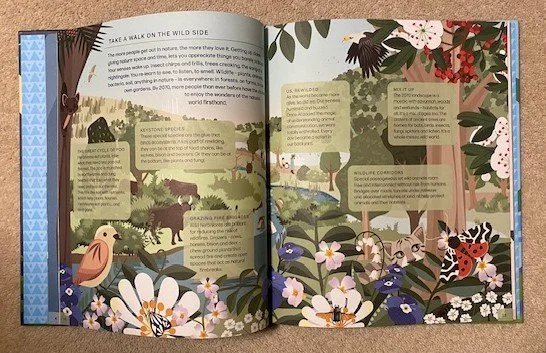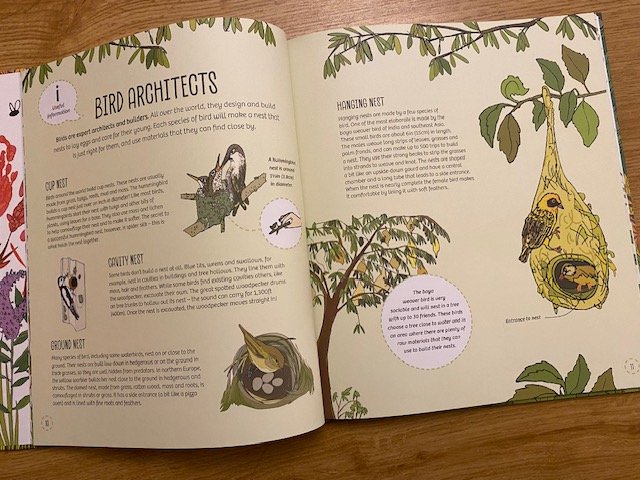
Reviews
There are so many incredible books available at the moment that it is impossible to read them all, no matter how hard I try! Here are my thoughts about some of the books I have read and how I think they could be used in school as well as Q and A sessions with authors and illustrators.
Future Vision
‘Welcome to 2070…’
‘Future Vision’ is quite a curious book. In the introduction, the authors raise the question of whether it is ‘fact or fiction?’, explaining that although they have spoken to ‘dozens’ of experts and read ‘hundreds’ of books, basing the book on real possibilities, no one knows how things will actually be in the future. The book shows their possible version of the future, a future in which countries have come together to solve problems and have created a better world.
A character named Kit leads readers through the book, showing what life is like in 2070. Possible future transport, homes, food and wildlife are shown with ideas about where AI might lead- in this case AI holobots! There is much to absorb and reflect on in these pages- and much that may spark lively debate and plenty of questioning! I remember watching ‘Tomorrow’s World’ and feeling a mixture of wonder, fear and excitement about some of the things they introduced and I am sure this book will have the same effect!
Excellent for sparking discussions in school or at home, ‘Future Vision’ offers an optimistic view of the future.
Future Vision
Dr Cathy Rogers and Madeleine Rogers
Button Books ISBN: 978-1787081505
100 Ways to Save the Planet
There are many books available which talk about the damage being done to the planet, but in ‘100 Ways to Save the Planet’, author Tom Jordon not only clarifies what he means by ‘saving the planet’, but makes that ‘dramatic’ statement seem more achievable by offering practical, simple suggestions for ways in which readers can actually take action.
Starting with a ‘Green Superhero Footprint’ which suggests a fun way of recording how many of the activities have been achieved, the book offers one hundred ideas for engaging with nature or changing lifestyle which will help the reader become an Ultimate Green Superhero. Perhaps they might try ‘plogging’, discover the Norwegian philosophy of ‘friluftsliv’, check products for palm oil without the RSPO logo or those which contain nurdles and microbeads, those nasty little bits of plastic which are so harmful.
There are things which can be done at school as well as at home, making this an excellent book for teachers to share with classes as well as for families to enjoy. Simple steps like allowing verges to remain unmown, creating a bug neighbourhood, making a magic pond or reminding everyone to switch electrical devices off would all make engaging community activities for schools to engage with, encouraging people to see that the smallest steps can make the biggest difference.
Full of engaging illustrations, this is a very enjoyable and absorbing read.
100 Ways to Save the Planet
Tom Jordan, illustrated by Joshua Rice
Button Books ISBN: 978-1787081567
NNFN2024: Bird, Bee and Bug Houses
Not only does ‘Bird, Bee and Bug Houses’ share lots of fascinating facts about the wonderful array of wildlife on our doorsteps, it inspires children to make and do, taking a practical approach to caring for nature. Perfect for NNFN2024, it is full of fun activities and interesting ideas.
Having explained what habitats and ecosystems are and the reasons they are being lost, the book starts with a focus on birds and the different types of nest they build. It then offers step-by-step, illustrated instructions on how to build a bird box which incudes measurements and suggestions for some entrance hole sizes for different species. Information about owls and the differing types of nest box they might choose is followed by instructions for how to build a bird bath and make a no-bake bird cake.
Butterflies, bats, bees, bugs, beetle, frogs… there is so much information included here about wildlife and so many practical activities to interest and engage children, getting them out and about, encouraging them to take an interest in, and show care for, the creatures in their locality. Sure to inspire, the clear, attractive illustrations which accompany each activity make the book an appealing treat!
Bird, Bee and Bug Houses: Homes and Habitats for Garden Wildlife
Susie Behar, illustrated by Esther Coombs
Button Books ISBN: 978-1787081444








